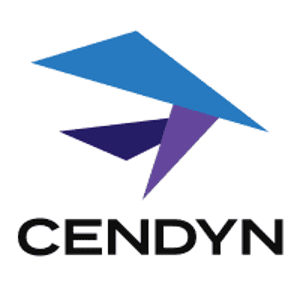When Marie Kondo first published “The Life-Changing Magic of Tidying Up” in 2011, best practices for website content were almost entirely different. Eight years ago, applying Kondo’s KonMari method to organizing your website would have been unheard of. Back then, landing pages were the name of the game — the more you could create, the better. But as the decade progressed, Google changed the rules. While it was common to have several landing pages targeting variations of the same keyword (e.g., separate landing pages for “hotel near Brooklyn Bridge” and “hotel in lower Manhattan”), Google began to favour websites that have fewer pages with richer, more dynamic content — essentially, quality over quantity.
Thanks to Netflix’s “Tidying Up With Marie Kondo,” there’s been a renewed interest in the KonMari method. So I looked at Kondo’s six basic rules of tidying and considered how you can apply them to managing your hotel’s website content.
 1. Commit yourself to tidying up
1. Commit yourself to tidying up
The task of tidying up may seem daunting, but consider this: we’ve found that upward of 50% of landing pages on unwieldy hotel websites (i.e., websites with too many pages) generate no revenue for the property. How do you know when it’s time to tidy up? It’s easy. Check if your single-property website has more than 40 pages, or if your multi-property website has more than 30 pages per property. If your website is over these recommended page counts, commit yourself to improving your website content.
2. Imagine your [best guest’s] ideal lifestyle
What matters most to your target audience? Is it the convenience of your on-site amenities and facilities? Or proximity to things to do in the destination? This is the key content you need to help website users find. The deeper they have to click into your site to find it, the higher your bounce and exit rates will be. As a rule of thumb, if a user can’t find the information they need in one or two clicks, these landing pages aren’t likely to contribute to the overall success of your website.
Instead of creating endless landing pages buried within layers of navigation, consider all the different ways you can convey a lifestyle by merchandising your website with content:
- Update hero images with seasonal photography and marketing messages
- Utilize promo tiles on the homepage to point to important areas of the website
- Activate content personalization to target audiences with custom marketing messages
- Refresh your calendar of events throughout the year with key events happening on the property and in your destination
- Publish regular blog posts about the best things to do in your destination
3. Finish discarding first
Before you refresh your existing content, the first step is consolidating similar or duplicate content and discarding unnecessary landing pages. If you have less than 50-100 words of content to describe a product or service, consider finding a way to feature it on your website without a dedicated landing page.
Some examples of unnecessary pages include:
- Separate landing pages for general hotel amenities and business-traveler amenities: Consider consolidating this content into a suitable page layout that serves as a comprehensive overview of all amenities at the hotel.
- Separate landing pages for a destination area guide and nearby restaurants: All destination content should be consolidated into a suitable page layout that serves as a comprehensive area guide for your destination.
- Separate landing pages for rooms and suites: Using modules allows you to organize all accommodations on one page, creating a streamlined experience for users.
Once you have identified instances of similar, duplicate, or unnecessary landing pages, identify where you can redirect these pages. If there are two similar landing pages and you can’t decide which to keep, look at metrics such as page views, average time on page, bounce rate, exit rate, and conversion rate to determine which is the best-performing page. After implementing a redirect to the most relevant page, discard (delete) the similar or duplicate page from your CMS.
4. Tidy by category, not location
After discarding similar or duplicate landing pages, it’s time to tidy your top-performing pages. It’s likely that your hotel website has standard categories, like Accommodations, Dining, and Groups & Events. For single-property websites, it’s as simple as working your way through one category at a time. For multi-property websites, consider refreshing content by category, not location. For example, work on the Dining pages for all of your property locations before moving on to the next category. By focusing on a single category across all your properties, you can ensure consistency in style and content from location to location.
5. Follow the right order
According to Kondo, the correct order of tidying up (in real life) is: clothes, books, papers, komono (miscellaneous items), and sentimental items. These don’t translate into the digital space, but if you could only look at five aspects of website content when tidying up, consider:
- Business need. Does the landing page serve a business need?
- Discoverability. From the homepage, does it take more than two clicks to get to the landing page?
- Content. Does every landing page have at least one strong hero image that visually communicates the primary message of the page? Does every page use clear, concise, and engaging language to convey that message?
- SEO. Does every language page have a target keyword, and is that keyword used in the page title, H1 header tag, and the body content?
- Miscellaneous items. Are your landing pages merchandised with marketing messages, CTA buttons, and wayfinding that guides users through a flow that leads to a booking?
6. Ask yourself if it sparks joy (for your potential guests)
Free Wi-Fi. Luxury bath amenities. On-site restaurants. So many offerings that were once considered unique have become commoditized. Be realistic about what your target audience expects and what will actually spark joy (i.e., what will make them tick — and click — on your hotel website). If you want to surprise and delight, consider:
- Content personalization. Speak to new and returning visitors differently. Serve new visitors higher in the funnel information about the destination and what’s nearby the hotel, while showcasing accommodations and special offers to return visitors lower in the funnel who have already signaled affinity for your property.
- Special offers and packages. Everyone likes to know they’re getting a good deal. Think about ways you can go beyond seasonality or discounted rates to offer something new and interesting. Is your property in New York? Create a package around a favorite film or TV show that takes place in the city. In a tropical beach destination? Include a sampling of signature cocktails in summer room rates. On a mountain? Partner with a specialty retailer to offer brand-name ski gear packages during snowy months.
- Unique destination area guides. Anyone can go to Condé Nast Traveler or Fodor’s to plan their next trip. But hotels are perfectly positioned to offer up insider tips about their destinations that major travel publishers won’t cover. Tap your concierge or staff to provide recommendations that aren’t published anywhere else.
So as Kondo suggests, say arigato (thank you) to your old content as your discard it and optimize your site to meet best practices and quality standards in 2019.
About the author
Nick Papa is the Senior Copywriter at HEBS Digital. Founded in 2001, the firm is headquartered in New York City and has global offices in Las Vegas, Tallinn, Munich, and Asia-Pacific. Through its Smart Guest Acquisition Suite, including the smartCMS®, Smart Personalization Engine, Smart Data Marketing, and full-service digital consulting and marketing solutions, HEBS Digital helps hoteliers drastically boost direct bookings, lower distribution costs, and increase the lifetime value of guests. Its diverse client portfolio consists of top-tier luxury and boutique hotel chains, independent hotels, resorts and casinos, franchised properties and hotel management companies, convention centers, spas, restaurants, DMO and tourist offices.
Part of NextGuest Technologies, HEBS Digital and Serenata CRM, the most comprehensive Hotel CRM Suite today, are the creators of the hospitality industry’s first Fully-Integrated Guest Engagement & Acquisition Platform. Contact HEBS Digital’s consultants at 1 (800) 649-5076 (North America), +64 (0) 9 889 8489 (Asia Pacific) or success@hebsdigital.com.


















